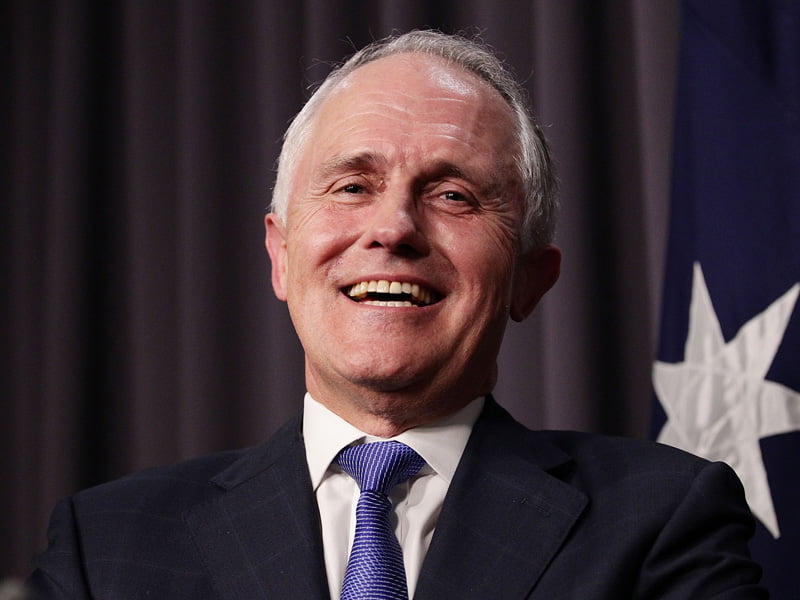A Nokia-sponsored report from Ovum released this week sets the scene for the post-rollout NBN, where network infrastructure suppliers stand to make serious money upgrading the dog’s breakfast of a national broadband network.
The NBN recently passed the halfway mark on the path to its 2020 completion date, just four years late on what the Coalition promised when it came to power in 2013, and radically changed Labor’s mostly fibre-to-the-premise NBN plan into a mix of fixed-line tech that includes fibre-to-the-node, the curb and the premise, as well as the old Telstra HFC cable TV network.
Then there’s the HFC network Australia bought from Optus which was so derelict it will need to be replaced with FTTC where there is no Telstra HFC strung alongside that can be used.

As the NBN rolls out and punters discover problems with reliability and performance on the network, especially with the FTTN section, it is becoming clear that there will need to be major NBN upgrade work starting pretty much the day after the rollout completion party.
If the Turnbull government finds the NBN a headache now, with a raft of negative press and the ACCC launching a public inquiry into the network, imagine the political pain when the next federal election rolls around.
This week’s report tiptoes through the political tulips, which is to be expected.
As a network infrastructure supplier, Nokia doesn’t want to get on the wrong side of either NBN Co or whichever government is in power come 2020.
Perhaps the most ludicrous assertion in the report is this one which comes early in the opening summary.
“While current speeds are sufficient to meet today’s needs, end-user bandwidth is evolving. While there are few use cases today that require an end-user to currently have access to speeds greater than 25Mbps or 50Mbps, this is likely to change over the next decade,” says the report.
25 Mbps download was the mark our former luddite-in-chief Tony Abbot predicted was ‘more than enough’ for households when he promised during the 2013 campaign that everyone in Australia would have that network performance level by the end of his first term.
Anyone trying to stream a Netflix 4K movie – which requires a steady 25 Mbps – while the rest of the family variously try and download the latest 50GB game file and stream their own hi-res stuff will have a chuckle at both Mr Abbott and the Ovum report.
But the report, titled ‘A Vision for NBN Evolution,’ makes it pretty clear in its opening summary that the expectation is that the NBN will need to get tweaked sooner rather than later.
“With the rollout program set to deliver on current objectives, NBN and its shareholders should now be looking to define and communicate their long-term vision for the NBN, and establish objectives and processes for future evolution,” says the report.
According to Nokia, the report is an attempt to stimulate conversation around what the NBN should look like in the 2020-2025 period and beyond.
“By 2025 the ubiquitous availability of superfast fixed and wireless broadband will be the foundation of the digital economy, contributing to the transformation of services, applications and user behaviours,” it says.
Stephen Myers, the Ovum Principal Consultant says upgrade planning needs to start now.
“What we are talking about is beginning to get that planning phase underway,” he says.
NBN and the government have a series of decisions about how they want to go forward and operate at the point the mass deployment is complete. Particularly for government it is about looking again at the Statement of Expectations (SoE) and setting new guidelines around how the NBN should go forward.”
The current SoE is all about getting the network rolled out quickly, albeit four years later than originally promised.
“If you look at the SoE today it is around focussing on how to get the network deployed ubiquitously as quickly as you can with some minimum standards.
There is also a requirement in the current SoE to contemplate how the NBN could be tweaked in the future and Mr Myers believes the closer we get to 2020 the more important that consideration becomes.
“Two years out from when the network is complete is the time to start that conversation,” he says.
While Ovum ranks Australia a dismal 35th in global fixed line broadband development now, it projects we will reach a more respectable 15th in 2021, after the NBN rollout is complete.
The upgrade path to better NBN performance is ‘deeper fibre’ along the NBN pathways that still use copper and HFC says Els Baert, Nokia Manager of Fixed Networks Strategy Engagement.
“We continue to innovate and get higher speeds on the copper and HFC lines. It’s always going to be driving fibre deeper
“The other part which is going to become more and more important because you are driving that fibre deeper and you have more and more nodes in the network is virtualisation,” says Ms Baert who sees network virtualisation and the emergence of software defined networks as important for improving the customer experience through better fault management.
Do you know more? Contact James Riley via Email.

